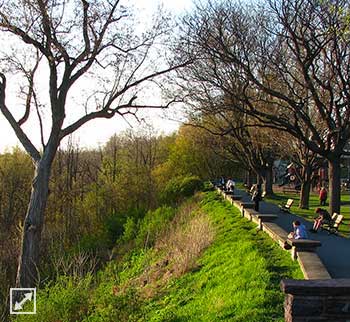Landscape Lenses
Ecological Landscape

Battery Street ParkEcology is the study of organisms and their environments - and the interrelationships between the two. While the focus of a cultural landscape analysis is on the relationship between humans and the land over time, an ecological landscape analysis emphasizes the non-human organisms with whom we share the local landscape. This distinction is not meant to promote humans as being separate from nature, but rather to draw attention to ways in which we influence (and are influenced by) the non-human components of our landscape.
The Burlington Geographic project utilizes a “pieces, patterns, and processes” approach to ecological landscape analysis. The pieces can be thought of as the different plant and animal species that inhabit the town, while the patterns are the manner in which they are distributed across the landscape. Processes refer to the forces (such as disturbance, climate, and soil chemistry) that drive these patterns. For example, when analyzing Burlington from an ornithological perspective, we might ask questions such as: “What species of birds species nest here, and where? Which birds are common and which are rare? How have their populations changed through time, and why?”
To truly understand the pieces, patterns and processes that shape the landscape, we need to study how the plants and animals of the community respond to their environment through time. Historic maps and census data, combined with current information and field observations are our best tools for getting to know the ecological landscape. We know that human impact has changed Vermont’s ecological landscape enormously over the last 400 years. Some changes are obvious, such as the extinction of certain plant and animal species (as well as the introduction of non-native species), but other changes more subtle, like when wildlife, e.g., coyote and fisher, adapt to new habitat opportunities.
On this website we have chosen to break up the ecological landscape into three broad categories based on scale, and a common set of patterns and processes.
Plant communities develop and respond to certain elements of the physical environment such as soil structure and chemistry, topography, and climate.
Wildlife habitat is in part governed by these factors, but is also impacted by vegetative structure and human disturbance on a larger scale.
Aquatic communities respond to soil and bedrock chemistry and climate, but are also very much shaped by the properties of the water in which they live.